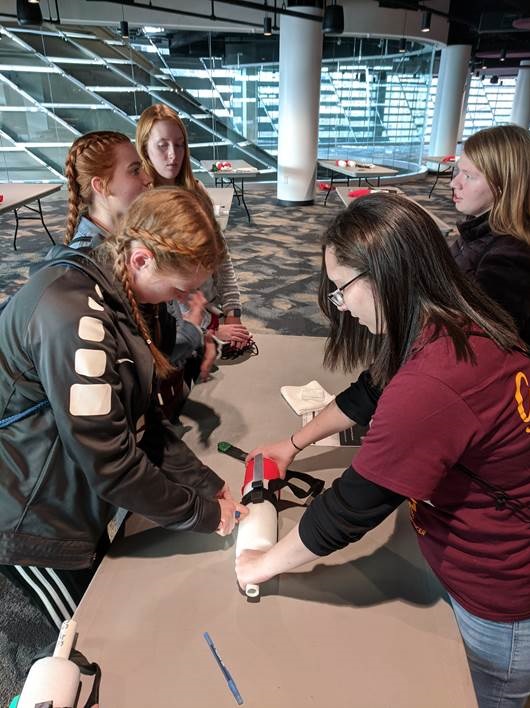These online trainings are part of a three-year effort by the Uniformed Services University’s (USU) National Center for Disaster Medicine and Public Health (NCDMPH) and the American Red Cross, in partnership with teachers and medical experts, to develop FAST curriculum for high school students. Although these trainings were initially intended to be in-person sessions, the COVID-19 pandemic necessitated the move away from traditional classrooms to remote, digital learning platforms.
Virtual focus groups examined challenges and potential solutions for FAST implementation at the state and local levels and in school districts and classrooms. The train-the-trainers sessions, covering a variety of injury scenarios, instruct how to assess scene safety, determine whether bleeding is life-threatening or not, communicate effectively with EMTs and others at the scene, apply direct pressure and place a tourniquet correctly. In virtual sessions, participants also practiced skills on simulated legs, under supervision by USU medical students who were previously trained as provisional FAST instructors.
The final step of instructor certification will be bridge training, to be developed online by the American Red Cross by 2021. Curriculum for the bridging course will consist of three modalities: instructor-led (classroom) training, and blended format (online didactic session plus in-person hands-on training), either of which leads to American Red Cross certification. There is also a Web (online-only) training that leads to a participation certificate. The American Red Cross will host the finalized course, once available, on its learning management system.
Evidence from a recent study supports the widespread implementation of the FAST program. According to results published in the journal Academic Pediatrics, high school students were able to learn to stop bleeding via multiple educational modalities. Instructor-led, blended, and web-only training sessions guided them to apply tourniquets correctly. In all the above modalities, students were able to learn to distinguish between wounds that require tourniquet application and those that do not, and at the end of training showed an increased willingness to give aid to the injured. The study demonstrated that brief videos and other online content can be effective in teaching hemorrhage control knowledge and skills to high school students, who are accustomed to web-based learning.
Blended learning –self-education via a Web app, followed by in-person skills practice – led to performance as high as, if not better than, instructor-led training. This finding represents a reduction in in-class time and savings on training resources. In the Web-only training, 61% of participants successfully applied tourniquets with no in-person training at all. In the blended format, 94% of participants applied a tourniquet correctly. In the instructor-led format, 88% of participants placed a tourniquet correctly. Dr. Goolsby, lead author of the Academic Pediatrics study and a Professor of Military and Emergency Medicine at Uniformed Services University, stresses the importance of non-medical responders’ being able to perform such interventions to stop life-threatening bleeding as soon as possible after a traumatic injury. Additionally, he points out that in emergency situations, similarly to battlefields or airplane cockpits, precise communications are essential to positive outcomes.
There is no charge for high school students for the FAST certification itself or for the online materials. However, there is a charge for equipment. The American Red Cross will offer a training package. The FAST program is designed for a typical high school class of about 25 students. For more information, go to: www.redcross.org/fast


